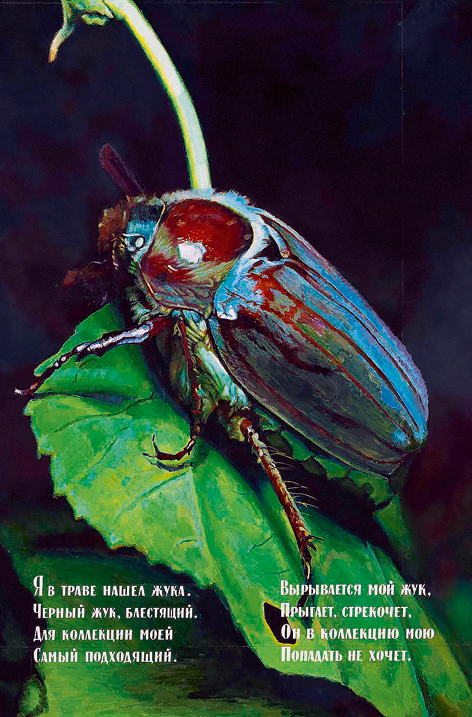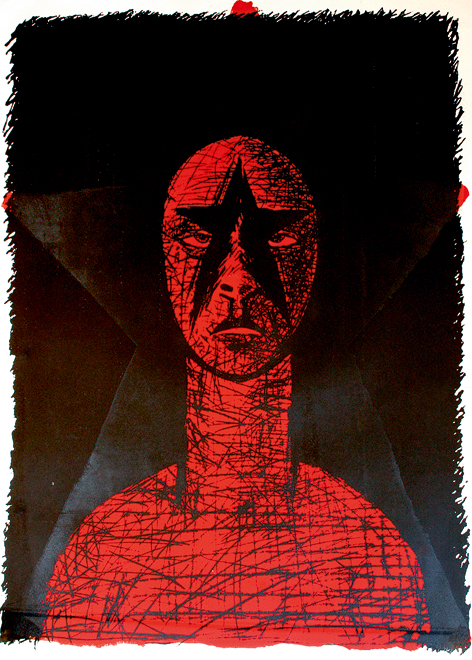|
|
 Seeking the Edge! Seeking the Edge! Marita Batņa, Culture Theorist | |
|
Art that is a provocation to politics is like gunpowder: when it does work, then the effect is widespread and lasting. The awarding of the second Kandinsky Prize last year in December caused a scandal which harmed unity in the promotion of Russian contemporary art, yet at the same time - resonated on the international art scene. The prize went to Aleksey Belyaev-Gyntovt, whose works employed imperialist symbols. This decision was publicly condemned by the previous winner Anatoly Osmolovsky (during the announcement ceremony he shouted "Shame!"), as well as the group Artmedia and the gallery owner Marat Guelman. Last year, the latter joined together with collectors Roman Abramovich and Dasha Zukova to organize, with the involvement of the government, a major retrospective for the veteran of Russian contemporary art, Ilya Kabakov, in Moscow in September - October. The conflict was seen as a challenge by Artmedia to the organizer of the Kandinsky Prize: the ArtHronika foundation. The magazine which is published by the foundation is known as a platform for political, revolutionary, even shocking art; however, the selection of the candidate was up to the jury, not the leader of the foundation - entrepreneur and collector Shalva Breus. Some time ago, ArtHronika ensured that previously unofficial art was able to appear in an official guise: in 2004, within the framework of a Russian Ministry of Culture programme, the contemporary art magazine A-Ya - which had been persecuted under the Soviet regime - was reprinted. Publication of this magazine was a confirmation of the historical value of marginalized art, and, more importantly, shed some light on the original development of contemporary art, which forms the foundation for newer Russian art with its international ambitions. | |
 Ilya Kabakov. Beetle. 1982. Photo: Phillips de Pury (Auctions) | |
|
The seven large volumes of A-Ya came out in the West, from 1979 through 1986, in Russian and English, and contained rich visual material. The magazine offered a theoretical contribution, given that it had the experience of the 60s and 70s behind it. Already at the beginning of the very first issue, Boris Groys introduced "Moscow Romantic Conceptualism". Overall, Russian contemporary art was presented in all its diversity, including biographies and descriptions of many artists' work. Among the leaders were: Ilya Kabakov, Erik Bulatov, Dmitry Prigov, Ivan Chuikov, Francisco Infante, Leonid Sokov, Alexander Kosolapov, Vitaly Komar and Aleksandr Melamid, Oleg Vassilyev, Rimma and Valery Gerlovin, Edward Gorokhovsky, Vagrich Bakhchanyan, Boris Orlov. Of great importance in the magazine are the essays by Kabakov. The broad view of the Soviet social environment, history and the Western world presented by A-Ya established Russian contemporary art within an international context. It was not that long ago when one of the three founders-publishers of the legendary magazine, Alexander Sidorov, visited Latvia with his project for photographic art; unfortunately, he passed away at the end of last year. The interview given to the Art Banking section of the Trasta komercbanka can be read in the Vip Lounge supplement No.3 Art & Fact. It was a testimony by the Russian art expert about the massive growth in demand for Russian authors, which, it must be said, gives some idea of the compatibility between collecting art and the Russian mentality. As regards artists of the A-Ya era, it was noted that "for buying, there is nothing left..." To characterise the situation, mention must be made of the treasures which were available in open sale, admittedly, before the sharp decline in the art market. At the Phillips de Pury auction in London on 28 February, 2008, a large format work on wood by Ilya Kabakov (born 1933) - Beetle (1982) sold for 2.93 million British sterling pounds (the work was reproduced in A-Ya No.6, 1984); another work Glory to the Communist Party (1975) by Eric Bulatov (born 1933) was auctioned for 1.08 million pounds, and Oleg Vassilyev's (born 1931) Variations on the theme of the Ogonyok magazine (1980) - sold for 356,500 pounds. In the twenty years since emigrating, the three artists, who shaped the identity of conceptualism and non-conformism, have become a part of Western culture. | |
 Juris Putrāms. A Man with a Bruise. Private Collection. 1988. Photo: 'Birkenfelds' Art Gallery | |
|
The internationally distributed "non-conformism" is attributable also to Baltic art, and presentation of this heritage is a duty in the name of the past, as well as the future. In its October-November 2008 issue, Studija reported that nonconformist art was one of the directions set for the collection of the Latvian Contemporary Art Museum. The presentation is being eagerly awaited, especially considering that it is quite some time since a review of the early contemporary art was conducted at a public level: during the Trespassers exhibition and the conference (2005), organized by the Centre for Contemporary Art. The centre's research covers the art of the 80s and 90s in Latvia; currently, for the development of the museum's collection, it has been tasked with investigating the nonconformist heritage of the Soviet period. One collection which has been in existence for a long time leads the way and is collegially supportive of the museum. This is one of the world's largest collections of Soviet nonconformist art: the private collection of Norton Dodge. Dodge was presenting Baltic art already in the 1980s, at the Contemporary Russian Art Center of America in New York, which he established together with Margarita and Victor Tupitsyn - they were regular contributors to the A-Ya magazine, and have played a considerable role in the promotion of Russian art. In 1991, a collection of about 16 thousand pieces, the ‘Norton and Nancy Dodge Collection of Nonconformist Art from the Soviet Union, 1956-1986', was donated to the Jane Voorhees Zimmerli Art Museum at Rutgers, State University of New Jersey, which has been continuing research in this field. Demonstrating that Baltic art is an integral part of nonconformist art, as it constitutes around one fifth of the collection, an exhibition was held and a related book was published in 2002. Along with an in-depth examination of the development of art in the region, the publication was evidence of international opinion-making, highlighting the role of Baltic art: such was the experience of Mark Allen Svede, a collector who, from the 1970s onward, collected and contributed to the Dodge Collection with acquisitions of contemporary art from Latvia. While the national collection is being developed, the topicality of nonconformist art has been addressed by the gallery ‘Birkenfelds'. The exhibition Untamed, from 20 February to 16 March, with mood-setting background music by Hardijs Ledins, revealed the spirit of the time (the 1970s-1980s) through painting, print, photo and mixed media works. The show presented a hundred art works by Latvians (Aija Zariņa, Ivars Poikāns, Juris Putrāms, Juris Dimiters, Māra Brašmane, Juris Utāns, Māris Ārgalis, Andris Breže, Miervaldis Polis and others), as well as Estonian (Juri Arrak, Raul Meel, Leonhard Lapin and others) and also Lithuanian (Valentinas Antanavičius, Raimundas Sližys) artists. Only some of the works on show were for sale. The conclusion of gallery manager Toms Zvirbulis was no surprise: the quantity of sought-after works is limited, most of them have been in storage with the artists themselves, with some works coming from collections. The unconventional Estonian art collector Matti Milius provided works by artists of the neighbouring countries. The exhibition was attractive also from the commercial point of view; for serious buyers, the prices would have seemed quite reasonable, ranging from 200 to 5000 lats. The interest can only be described as natural - the time has come when the worth of early contemporary art is no longer under any doubt. This is founded on the objective passage of time, together with the still-fresh memories. And looking into the future - how can there be any loss of value in art which, in fact, embodies the spirit of a historical period, vitality and liberty? In crisis conditions, risk is not an ally, therefore the groundbreaking works by the pioneers of contemporary art are an excellent choice, and at the same time it is worth remembering that if you want safety, then you have to seek the edge. | |
| go back | |







